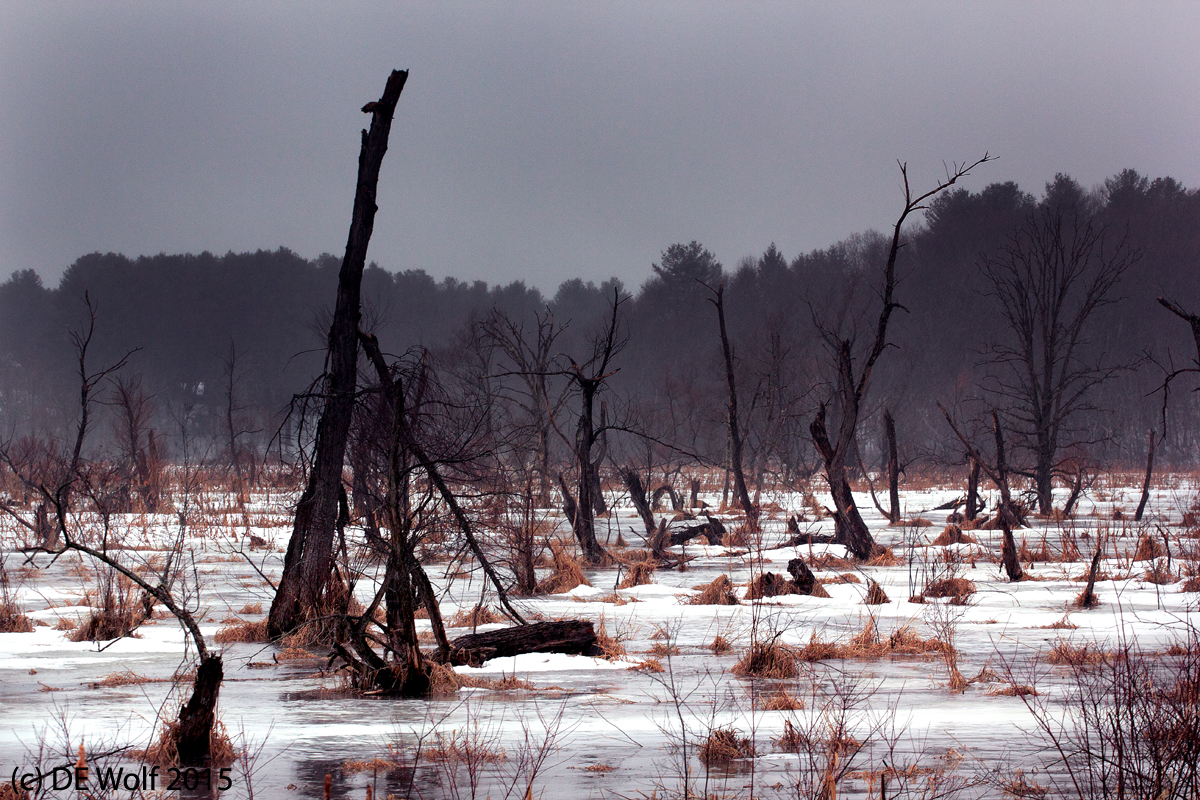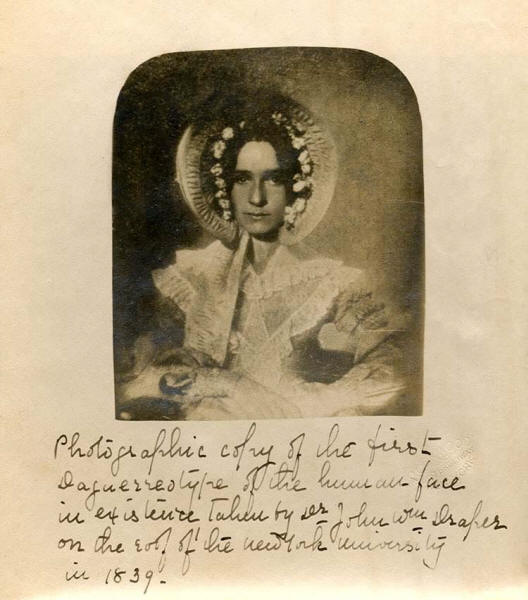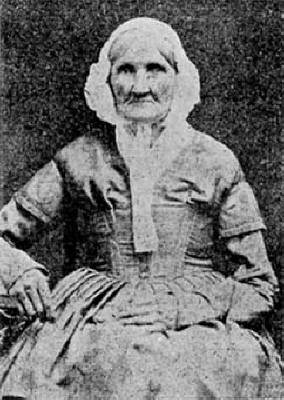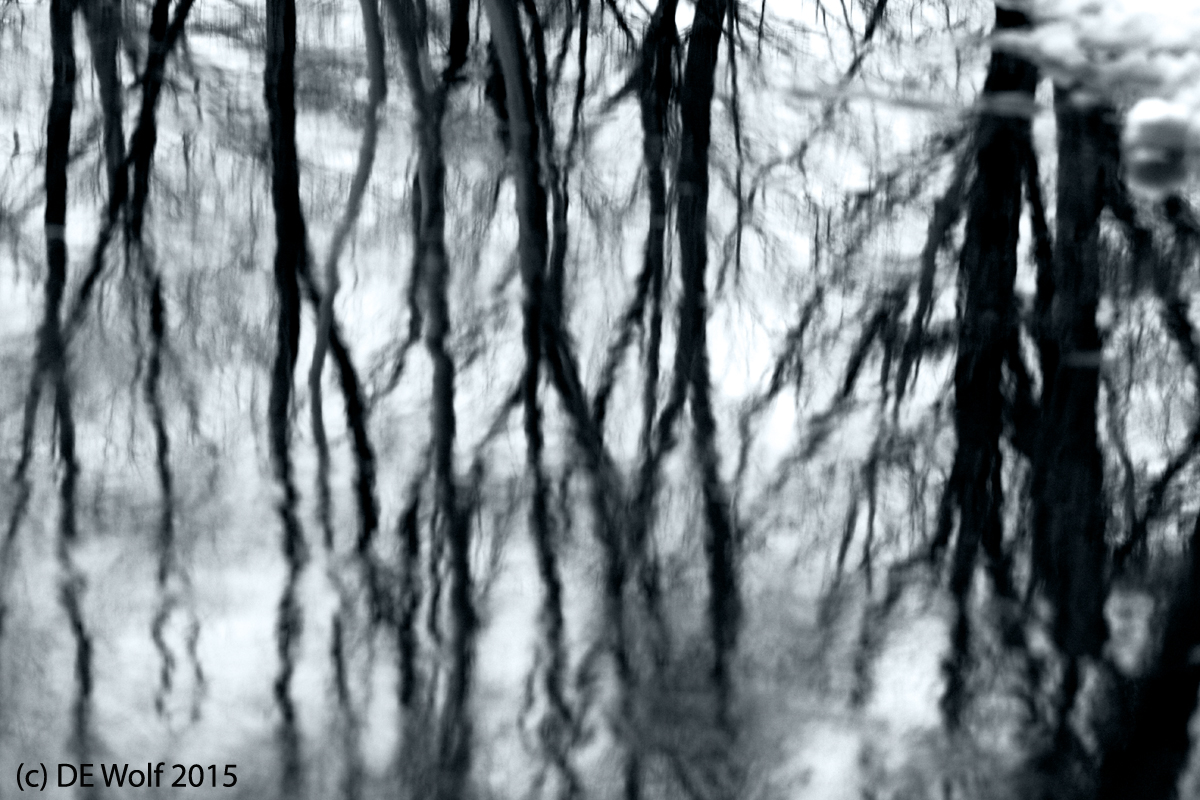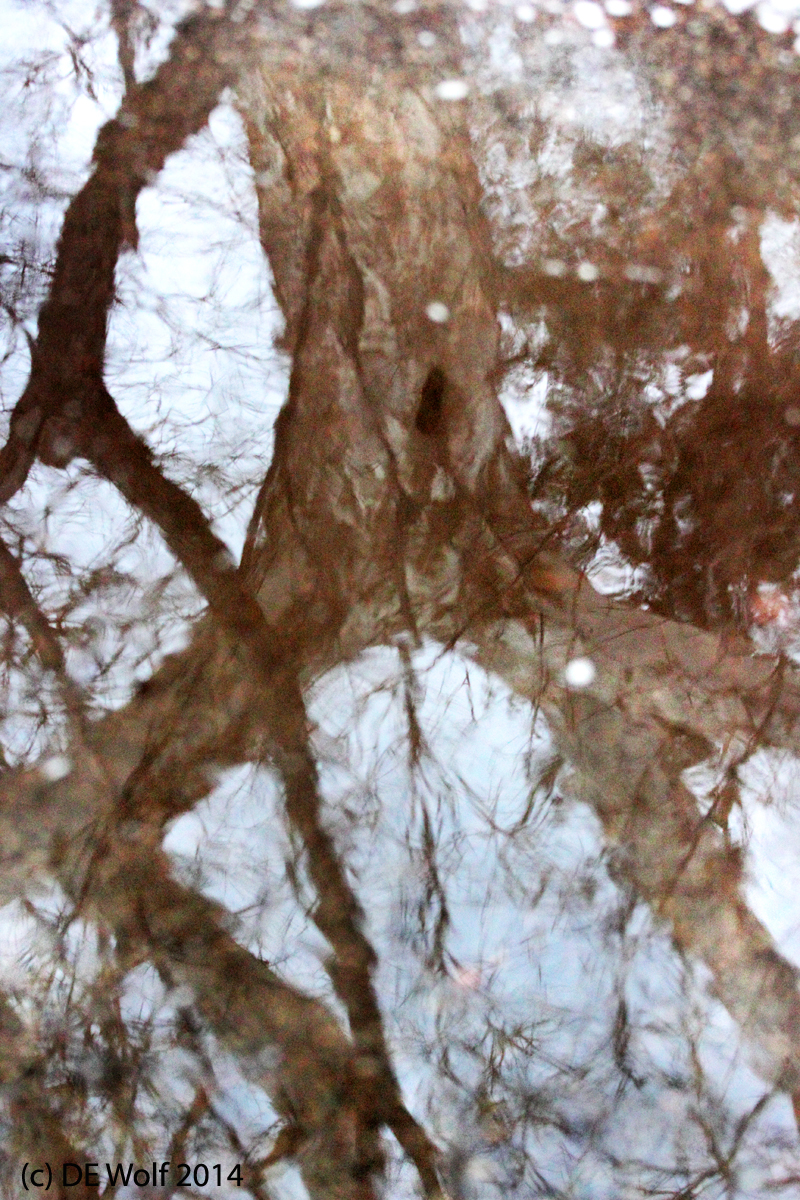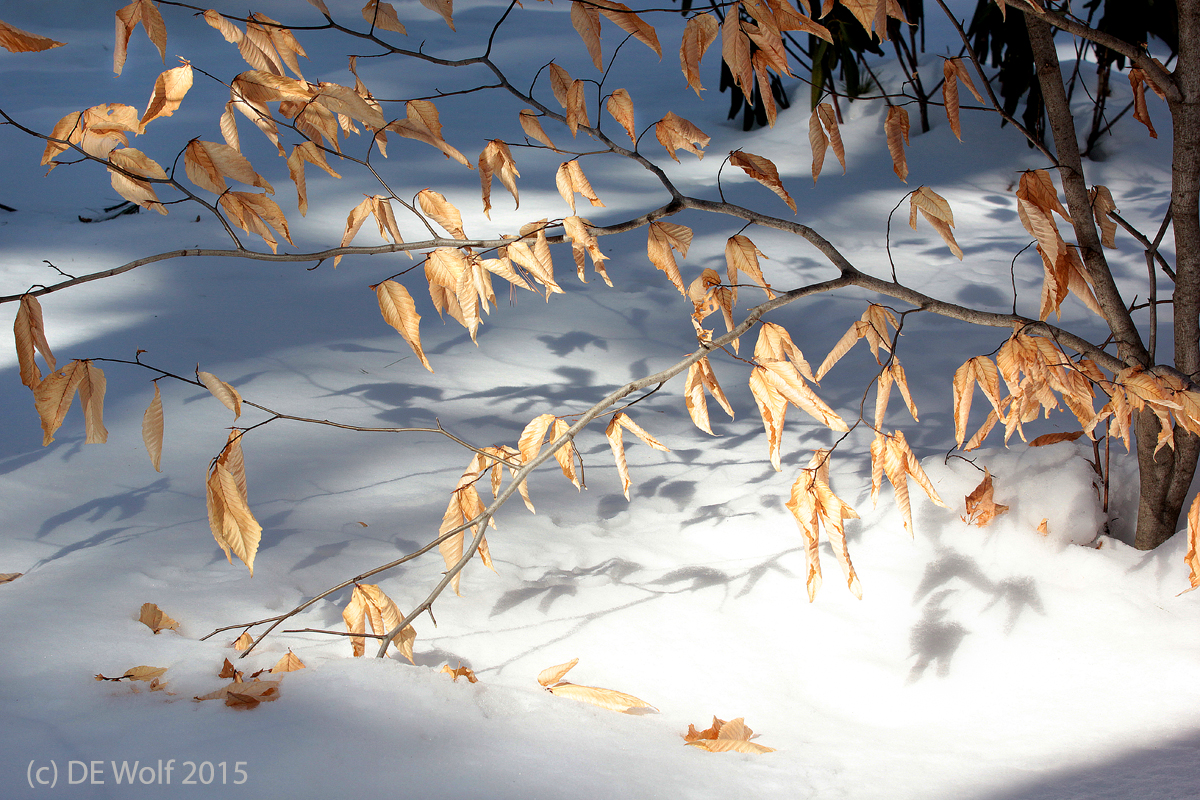At last, but as is inevitable in the revolutions of nature, spring is coming to the New England marshland. There is a special place that I like to watch the seasons change just off Landham Road in Sudbury, Massachusetts. This past Saturday I made a special stop there, knowing what I would find. The thaw had been melting the ice and collecting in huge puddles, and on this particular day our first big downpour of the season was adding to the effect and creating an atmospheric softness.
So far we are melting just right. After so much snow a quick melt and we will be inundated. I am sure that the beavers in this little marsh are wary of that. A few seasons back they were flooded out and would sit frightened and confused by the side of roads turned to rivers.
I had to cover my camera with a towel to keep it dry as I took Figure 1. It was raining heavily. And for that reason I decided not to slow myself down with my monopod despite the fact that it was pretty dim light and the lens that I was using had no image stabilization. Would Fox-Talbot have laughed at us or would he have been envious? Pleased with what I was getting, I took several images, and this was the first that I worked up. I liked the glistening snow and water against an otherwise brooding scene and chose to stay in color for just a hint of hue.
Canon T2i with EF70-200mm f/4L USM lens at 100 mm, ISO 1600, Aperture=Priority AE mode 1/200th sec at f/7.1 with +1 exposure compensation.

